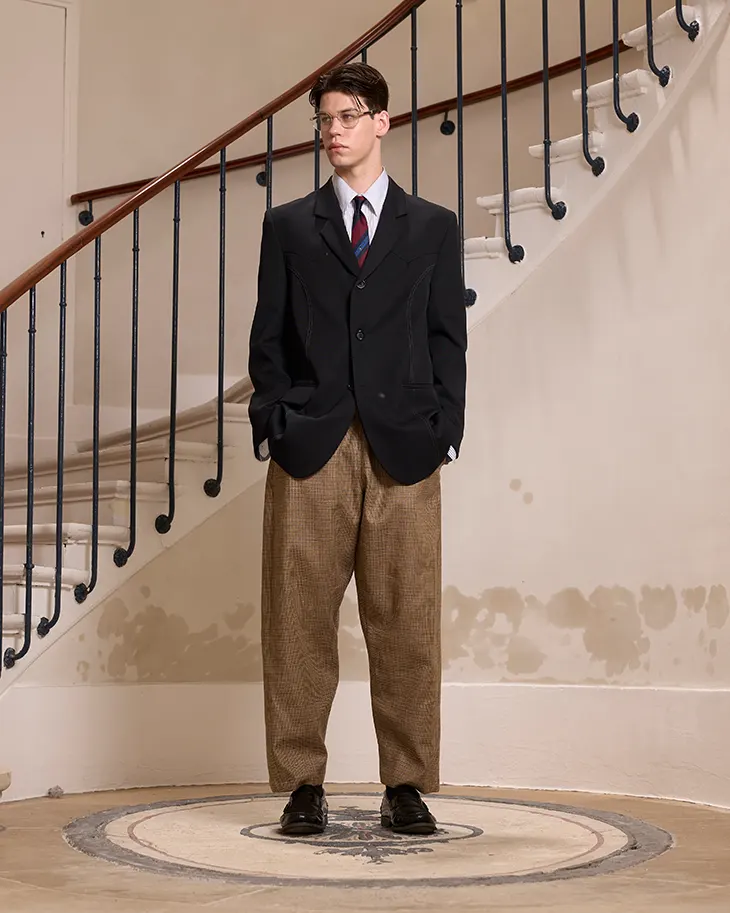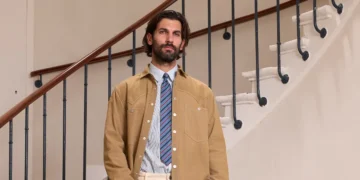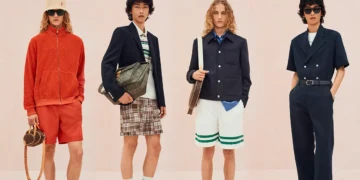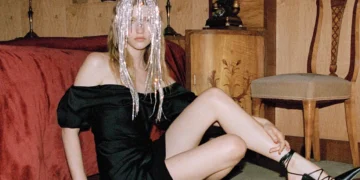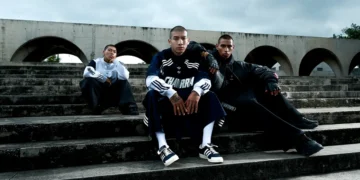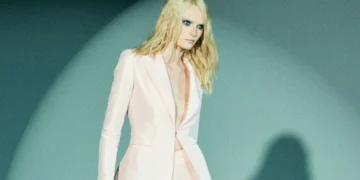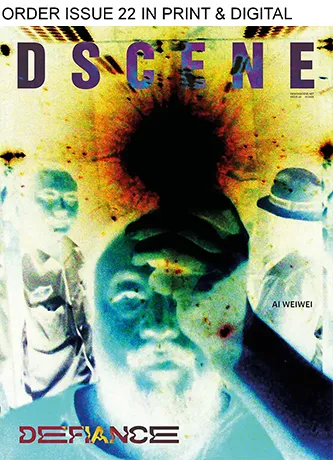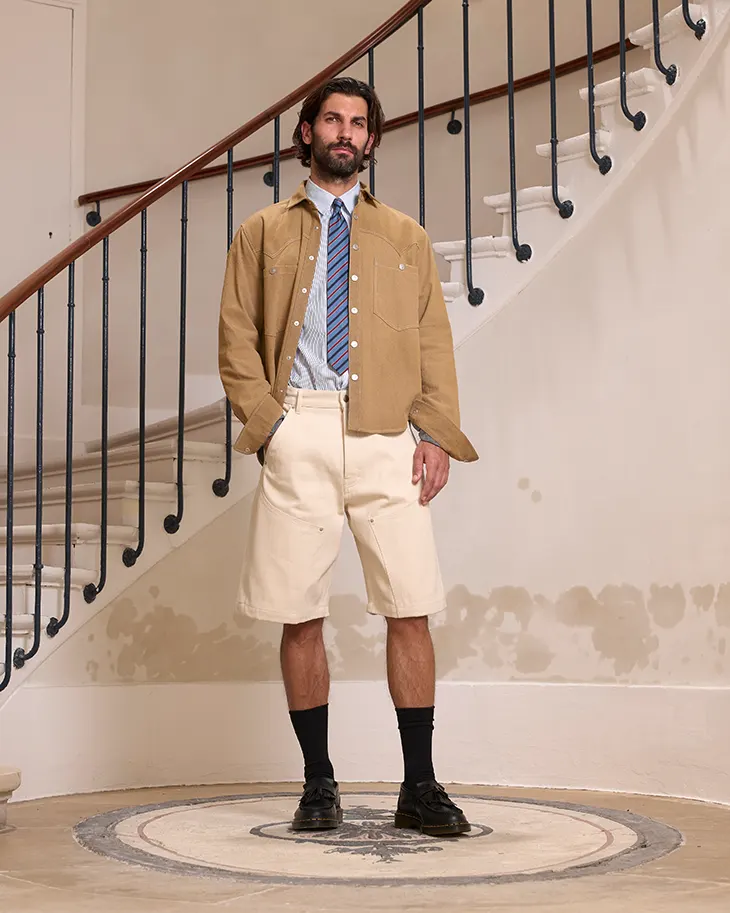
Arthur Robert stages the OUEST Paris Spring Summer 2026 show inside a Parisian hôtel particulier, though the setting evokes something else entirely. He transforms the space into a drive-in theater, conjuring a version of Americana that feels both familiar and entirely warped. The collection builds on the brand’s interest in workwear, pushing it toward a sharp, surreal reconstruction of masculine archetypes.
This season, Robert turns to the NASA archives for fuel. Specifically, he draws from photographs of office life in late 1960s Houston. The imagery captures a unique duality: men shifting between stiff boardroom uniforms and metallic flight suits. These contradictions guide the collection’s construction. Traditional tailoring carries a Sixties flavor, checked suiting, rigid lapels, corporate silhouettes, but Robert disrupts them with materials like silver nylon and exaggerated zipper detailing.

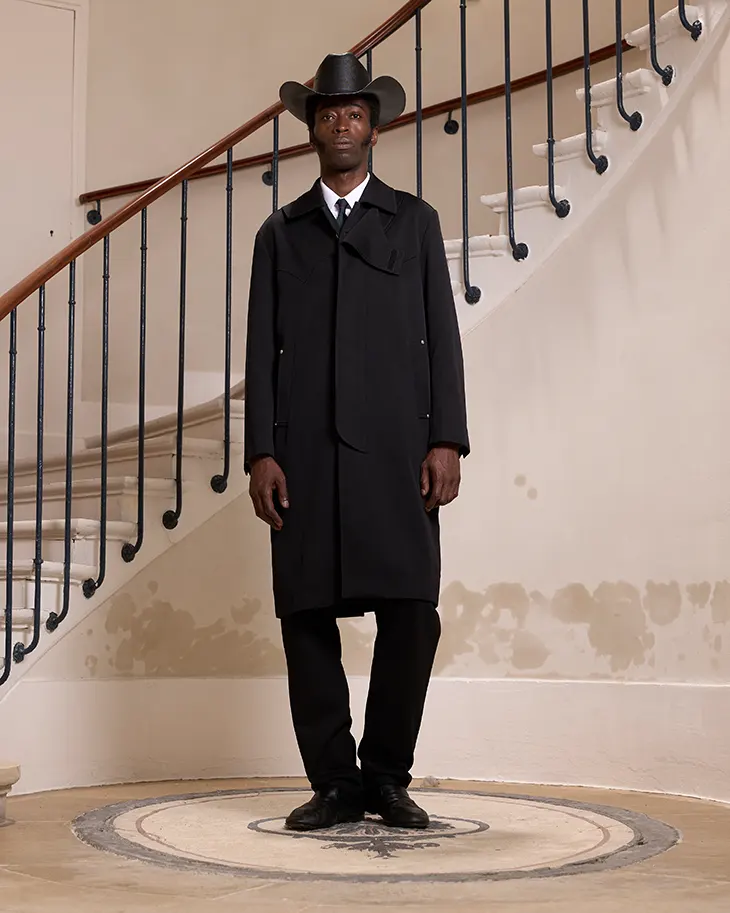
From that clash, a new kind of character emerges. The pieces carry hints of western influence, think cowboy shirts, pointed yokes, and bootcut trousers, but they also lean heavily into the coded aesthetics of fetish and space travel. A leather look nods to flight uniforms but veers into something far less utilitarian. Throughout, Robert balances a “nerdy elegance” with a sharp, angular masculinity that borders on cartoonish. This duality stays self-aware. OUEST Paris doesn’t present these men as ideals; they are imagined types, cowboys, engineers, executives, filtered through a winking reinterpretation of American masculinity.
Rather than building a traditional narrative, the collection unfolds like a series of character sketches. Each look captures a persona: the buttoned-up manager, the swaggering cowboy, the latex-clad technician. Two female models step into these roles, blurring any clear division between men’s and women’s wardrobes. OUEST Paris doesn’t neutralize gender, it twists its expectations. By placing women inside archetypes built for men, the brand reinforces the artificiality of those roles and the clothes that support them.
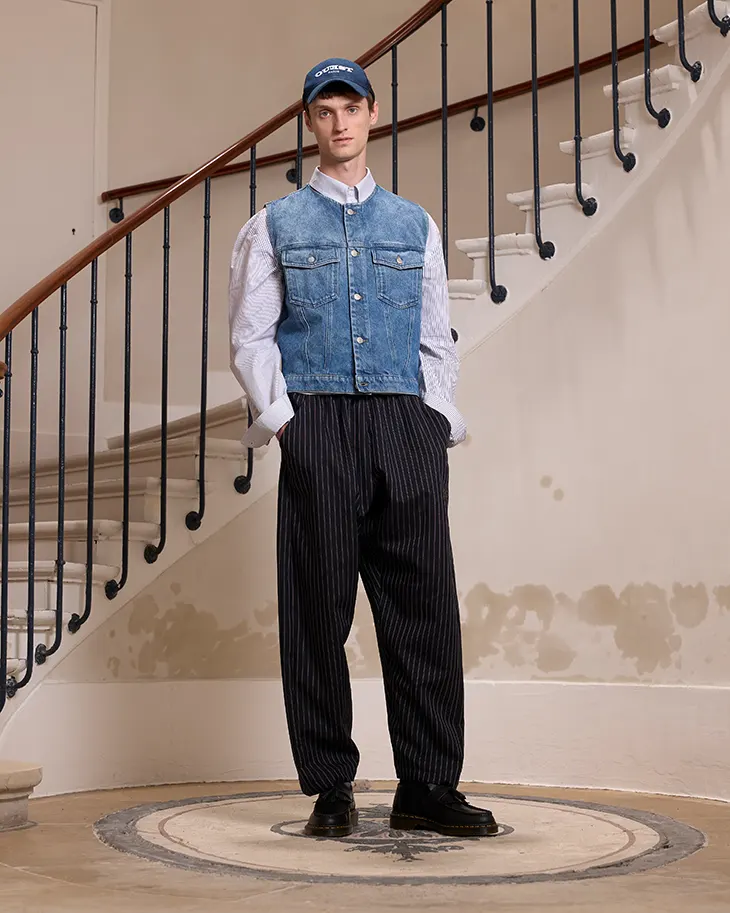
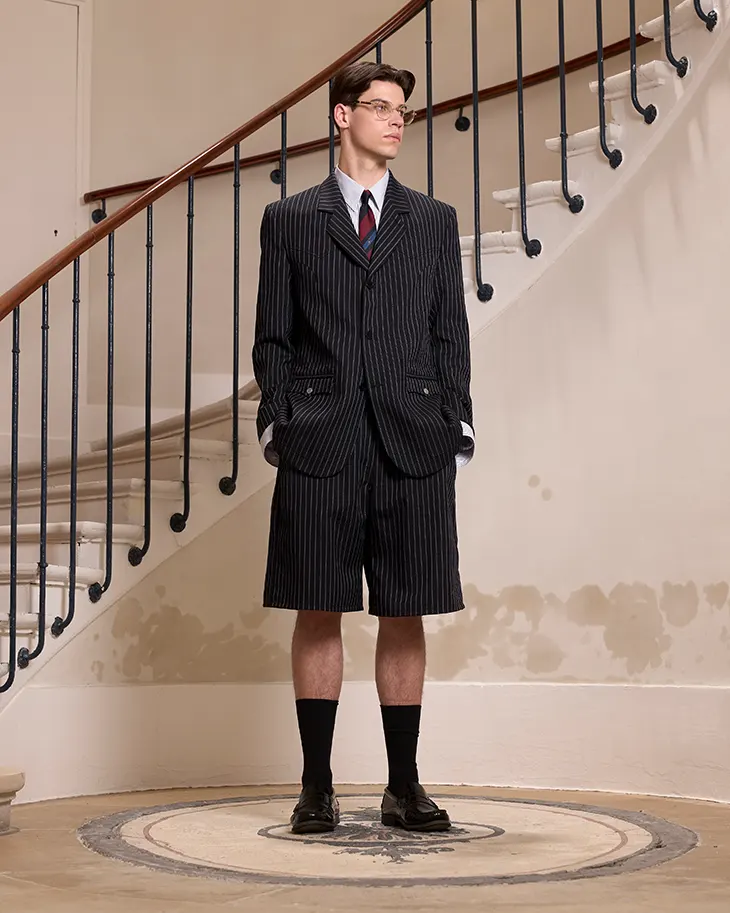
The result feels referential without leaning on nostalgia. There’s an intentional artificiality in the fabrics and finishes, especially the use of high-shine metallics and visibly exposed zippers. These aren’t historical reproductions, they’re simulacra, shaped by fantasy more than fact. The tailoring resists softness. Shoulders stay firm, pants hold their lines, and even the more experimental pieces, like the full-leather ensembles, adhere to a tight silhouette.
Robert continues to use irony as a design strategy. He strips masculine codes down to their symbols, lapels, leather, checks, metallics, and rebuilds them as stage pieces. Every look feels ready for performance, not in a theatrical sense, but in the way uniforms project identity. With support from the French Ministry of Culture and Dr. Martens, the collection frames this American narrative through a distinctly European lens. What results is neither parody nor homage. It sits in the space between.
